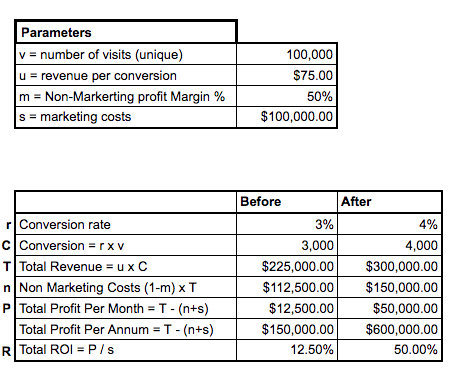It can be hard for those involved on the analytics side to justify the cost of embarking on an their data driven journey, at times the organisation believes that if the tools are free then why should they pay for them? Also executives are (rightfully so) focusing on hard numbers and demonstrations of how analytics can solve vital business problems which will help move the bottom line.
By speaking their language it may be easier to convince those around you and higher up not only of the possibilities of analytics but also the opportunity costs of not implementing and using it properly.
In the context of getting budget to set up your analytics tracking properly, hiring more resources and or upgrading your platform half your battle is already won.
Most people know intrinsically that using data to make informed decisions is essential, we do it in our everyday lives when we decide what to wear, where we go to eat, when to leave to avoid traffic etc.
Executives and decision makers will agree that using data to make decisions is an effective way to drive growth. The question often comes down to what investing in analytics will mean for the company or even the decision maker personally.
The answer to that will entirely depend on the nature of your business and industry as well as the goals, KPI’s and objectives. It may be to
- Create more efficient processes by finding out how staff interact with an internal system you’re using
- Improve user experience across the website
- Decrease bottlenecks and monitoring customer experience & or
- Improve your advertising channel efficiency by optimising spend in areas that are driving ROI
Whilst the reasons can be numerous the end outcome, whether its directly or indirectly, in the majority of cases is to move the bottom line for the company by driving more conversions.
The Case
Take the below example put forward by Brian Clifton (Brian Clifton PhD was Google’s first Head of Web Analytics for EMEA) to justify your analytics investment. You can see that that by using behavioural data from your analytics platform to remove pain points to increase the conversion rate by just 1% can lead to quadrupling of your ROI. He also states that in his experience improvements are typically in the double digits and often triple digits (Successful Analytics, Gain Business Insight by Managing Google Analytics, 2015)

(*marketing costs are assumed to be $1 per visit)
So if you struggle to put tangible numbers next to your analytics investment, try using the above framework to get an idea of how much analytics could potentially impact your business from an ROI perspective and start to speak the language that will drive action in your organisation.

Recent Comments